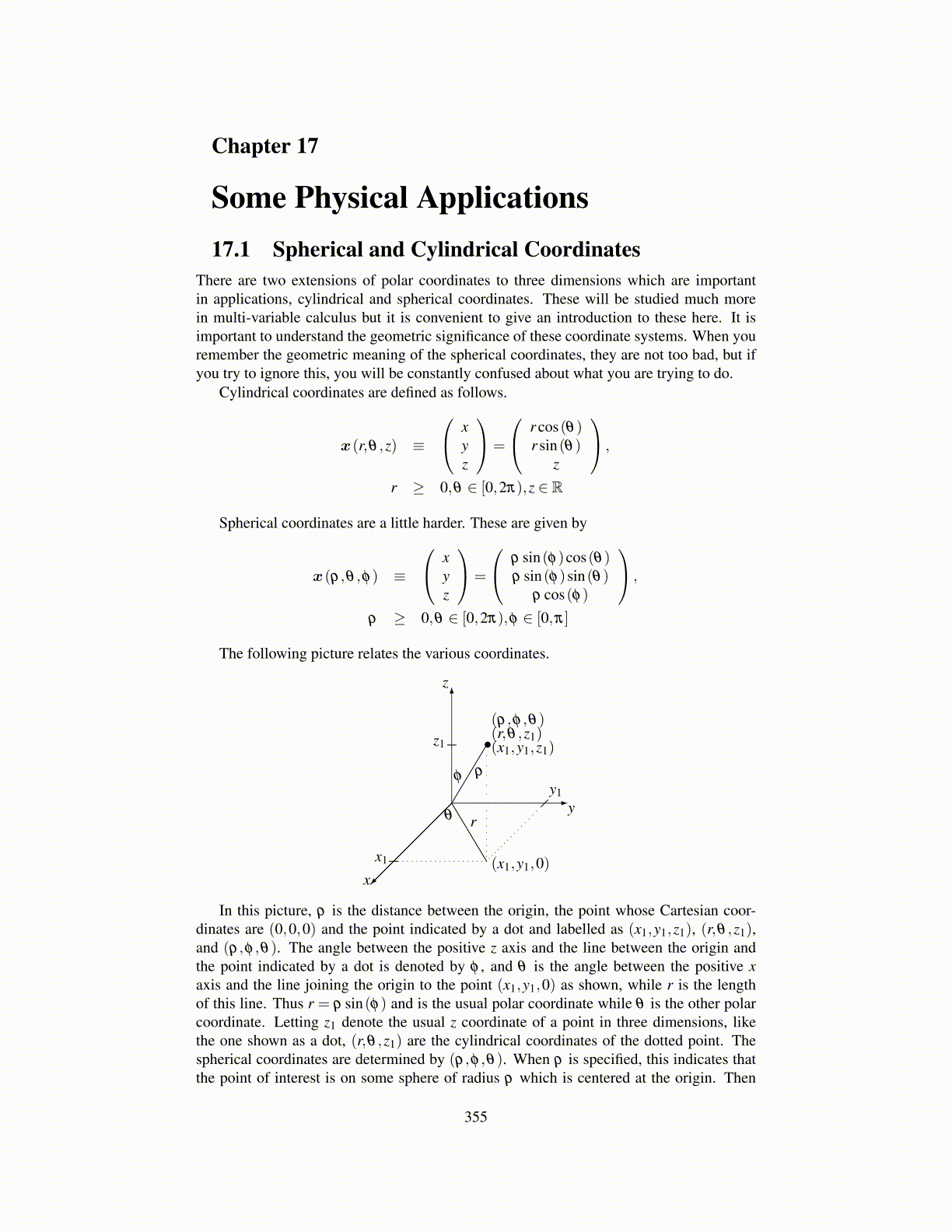
17.2. EXERCISES 355
(a)(5, π
6
)(b)
(3, π
3
)(c)
(4, 2π
3
)(d)
(2, 3π
4
)(e)
(3, 7π
6
)(f)(8, 11π
6
)2. The following are the rectangular coordinates of points. Find the polar coordinates
of these points.
(a)(
52
√2, 5
2
√2)
(b)( 3
2 ,32
√3)
(c)(− 5
2
√2, 5
2
√2)
(d)(− 5
2 ,52
√3)
(e)(−√
3,−1)
(f)( 3
2 ,−32
√3)
3. The spherical coordinates are given. Find the rectangular coordinates (x,y,z). (It istypcally a nuissance to go the other direction and in practice, you don’t want to dothis anyway.)
(a) (ρ,θ ,φ) =(4, π
2 ,π
2
)(b) (ρ,θ ,φ) =
(1, π
3 ,2π
3
)(c) (ρ,θ ,φ) =
(2, 3
2 π, π
3
)(d) (ρ,θ ,φ) =
(3, 2π
3 , 5π
6
)4. Find the tangent vectors corresponding to keeping two coordinates constant in the
case of cylindrical coordinates and verify that cylindrical coordinates are orthogonallike spherical coordinates.
5. Verify that the vectors cosθ cosφ
cosφ sinθ
−sinφ
,
−sinθ
cosθ
0
,
sin(φ)cos(θ)sin(φ)sin(θ)
cos(φ)
obtained from differentiating the spherical coordinates with respect to φ ,θ , and ρ
and then dividing by the length are an orthonormal right handed system of vectors.
6. In general it is a stupid idea to try to use algebra to invert and solve for a set ofcurvilinear coordinates such as polar or cylindrical coordinates in term of Cartesiancoordinates. Not only is it often very difficult or even impossible to do it1, but alsoit takes you in entirely the wrong direction because the whole point of introducingthe new coordinates is to write everything in terms of these new coordinates and notin terms of Cartesian coordinates. However, sometimes this inversion can be done.Describe how to solve for r and θ in terms of x and y in polar coordinates.
1It is no problem for these simple cases of curvilinear coordinates. However, it is a major difficulty in general.Algebra is simply not adequate to solve systems of nonlinear equations.